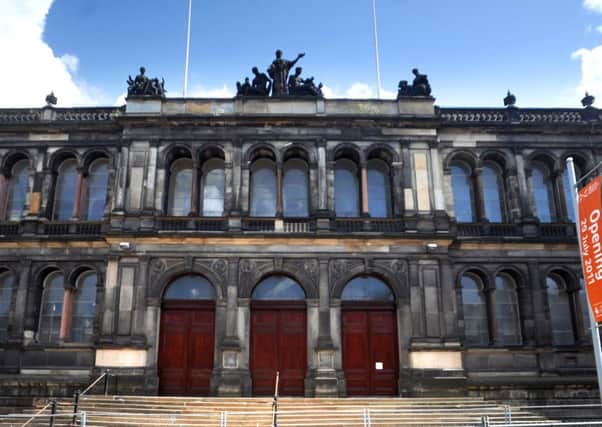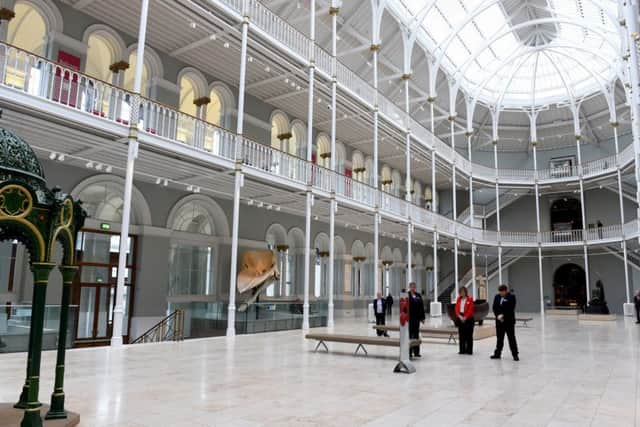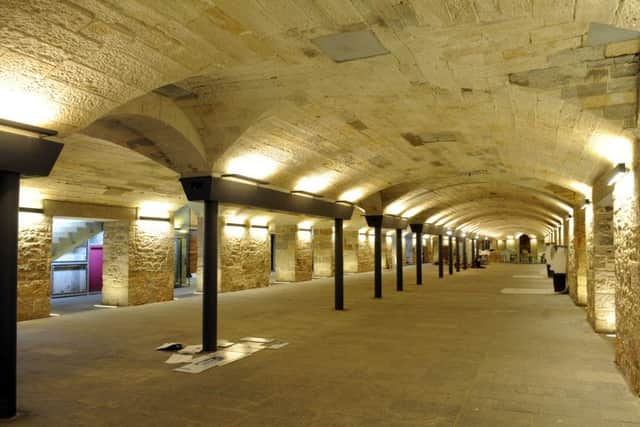Joe Wilson: Welcoming National Museum of Scotland's piazza with open arms


This year marks the 150th anniversary of Edinburgh’s National Museum of Scotland, and the institution is gearing up for a landmark year of events to celebrate. In this year’s programme, the museum will host the first comprehensive examination of Celtic art and identity, exhibitions on primates and fossils, and a celebration of the Lego creations of local artist Warren Elsemore, which will include a recreation of the Royal Museum of Scotland’s original 19th century form. Additionally, the second phase of renovation work (the first completed in 2011, seeing the creation of 16 new galleries) will be completed by the summer, providing the museum with 40 per cent more floor space.
With more room to exhibit its magnificent collection – carved out of previously hidden areas of the building – it is understandable that some may question why the museum also needs the creation of a new piazza outside its Chambers Street entrance, which will rob the thoroughfare of around 50 parking spaces in a city centre that badly needs them. (Work is already underway: he statue of 19th century Lord Provost William Chambers has been temporarily relocated to facilitate the works.) While the piazza’s creation may be contentious, and its necessity hard to gauge, it may prove to be one of the most important renovations the museum will see this year.
Advertisement
Hide AdAdvertisement
Hide AdThe old Royal Museum building is undoubtedly a masterpiece of Victorian era architecture, but it is now 150 years old and the role of the museum has changed a great deal since its founding. The National Museum of Scotland’s panoptic-style grand entrance hall is characteristic of that time; the British Government built a similar structure at Kilmainham Gaol in Dublin just five years earlier. The full-length glazed ceiling was intended to be a “window to heaven,” placing the prisoners at all times under the watchful eyes of God in an attempt to reform them.


The Victorian museum was cast in the role of social reformer as well; it provided the “cultureless” lower classes of the time with an opportunity to improve themselves through an association with art and objects that were better than they were. Early museum architecture all over the world reflects this. Entrances were often placed atop a flight of steps. A domed ceiling inside the building was supposed to place the visitor in an advanced position between the heavens and the earth, where it was considered the objects on display belonged. The old Royal Museum building follows the model exactly: when it opened its doors in 1866, the seventeen steps that led up to them literally placed the museum and its collection above the people.
The role of the modern museum, however, is far removed from its 19th century counterpart. No longer viewing itself as a near-celestial treasure trove, tasked with dragging people (fortunate even to be let in) up to its level, the 21st century museum is understood as a public good, in service to them. It is an entertainer and above all an educator, and as such it is essential that every institution is accessible, relatable and approachable.
The National Museum of Scotland’s 2011 refurbishment made significant changes to achieve this, most obviously through its redisplayed galleries but also through a subtle architectural change. By moving the doors to the museum away from the top of the entrance stairs to two unassuming glass ingresses at either side, the psychology of the museum’s façade was vastly improved without compromising its grandeur. The museum and its collection are now returned to the same level as the public; we are equals, as we should be.
A piazza will be the next important step in achieving the sense of “openness” that museums should be striving to instill. While museums of course no longer view themselves as such, some public perception of them as highbrow and unapproachable is still an issue. The National Museum of Scotland is particularly challenged architecturally, as most large museums in Europe afford the visitor the ability to fully encircle them (eg. the British Museum, the Louvre, even the Kelvingrove) in order to obtain a sense of perspective. The Edinburgh museum has a peculiar sense of fortification, visible from only two sides and badly hemmed in by the clutter of Chambers Street at the front. A piazza will not only allow the building space to breathe, but it will breathe life out into its environs. Providing space for art and entertainment, the museum will achieve an important state of cultural osmosis, with activity flowing out into the street as easily as people now flow into the museum from it.


This issue of “openness” is important and museums all over are struggling to tackle it. Amsterdam’s city council, for example, opted to retain the cycle path that runs through the centre of the Rijksmuseum in 2013, despite condemnation from some curators, and the British Museum is much maligned for its austere, unwelcoming façade (I attended a debate regarding this in 2014). The National Museum of Scotland has been fortunate in being able to change without compromising the aesthetic of the original building. Although they may be too small to appear of any significance, they are vastly important. The museum’s building is set to become a perfect fusion: its heritage safely preserved while eliciting a clear understanding of its modern role within society. In its very bricks and mortar it will be shining example of everything that is expected of the museum of today.
• This is an edited article from I Think Of Icarus, a museum blog run by Glasgow-based writer Joe Wilson. http://ithinkoficarus.com/